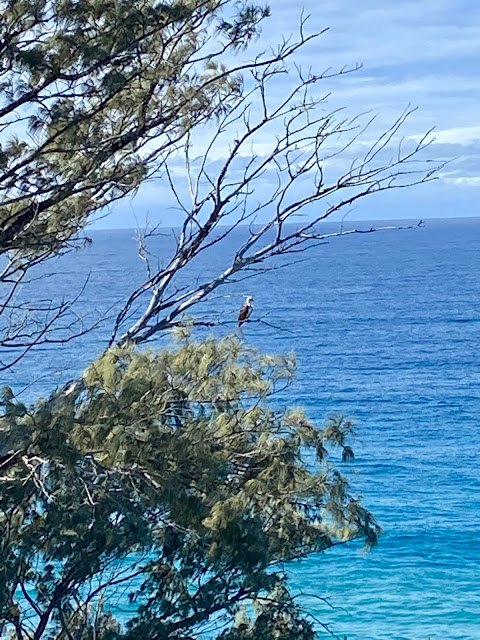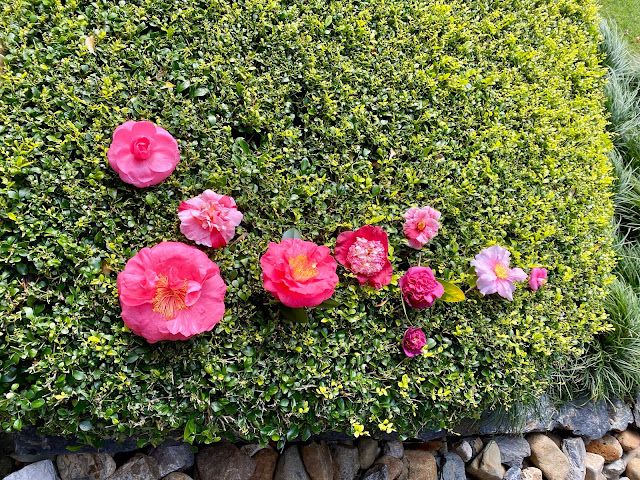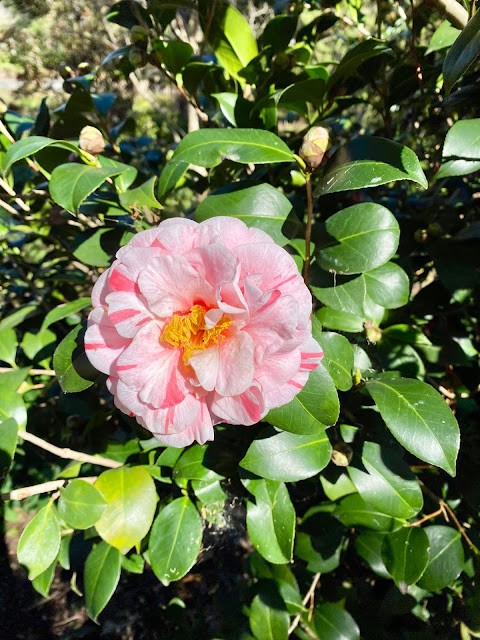Just back from what I can only describe as an amazing day in the country. Our destination was Rose - mere where a group of us had volunteered to help the wonderful Laurel prune some of her roses. There are hundreds of them, in between nasturtiums, buddleias, stephanotis, bougeanvillea and lots lots more. A gargantuan task that Laurel meets every day with her good humour, positive spin and kindness, but on this day it was in the company of some imperfect but oh so eager pruners who armed with secateurs and some gloves launched into some of the bushes. I lost my hat, got tangled in the branches, got stuck by their thorns, had to extricate others from their thorn prison and generally spent many pleasant hours chopping, gathering and getting rid of the cut off rose branches. Did we achieve much - maybe a tenth of the overall garden but we laughed in between learning, we sweated and smelt the sweet scent of heavenly roses.
We finished up with a lovely picnic lunch under an enormous tree and Laurel noted we were lucky nothing had fallen on us today. The expression dragged through a bush backwards resonates to sum up our dishevelled but happy faces.
A kitchen table with not one but three vases of scented and beautiful roses and a couple of pot plants. What every kitchen table should look like.






















































